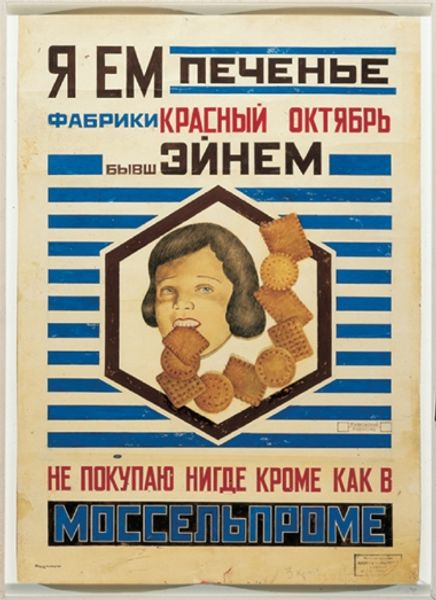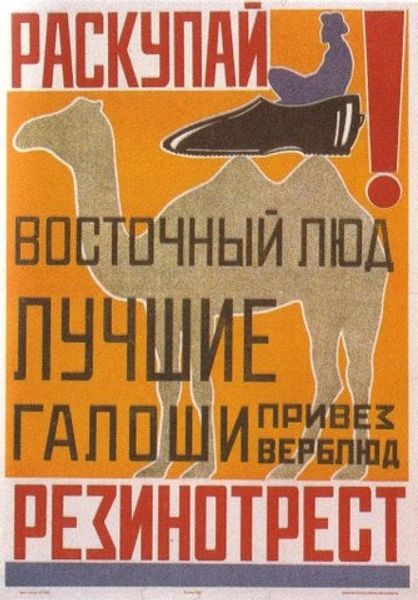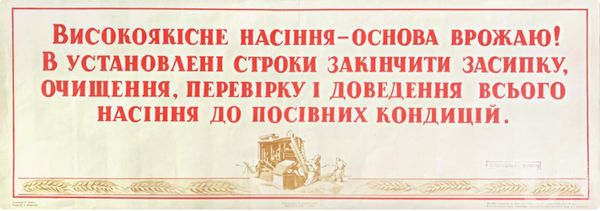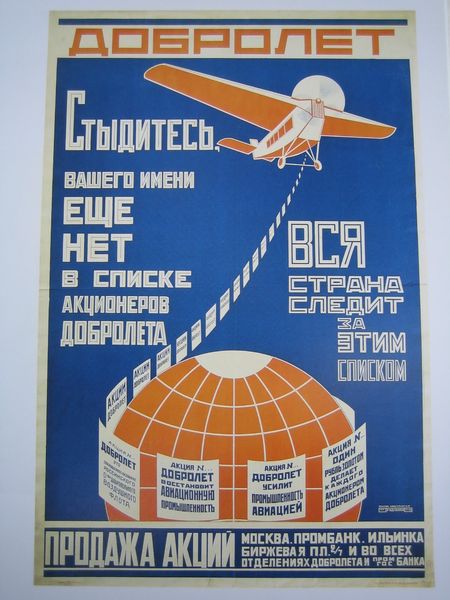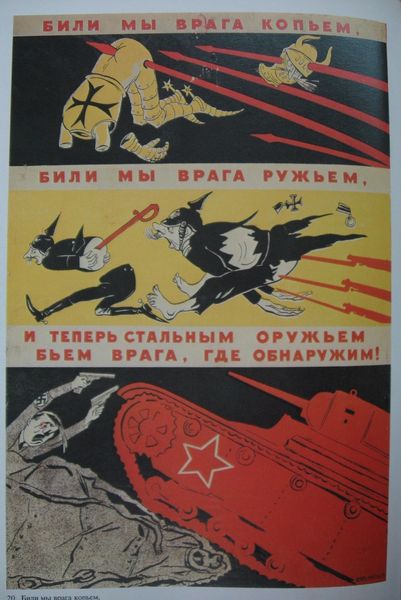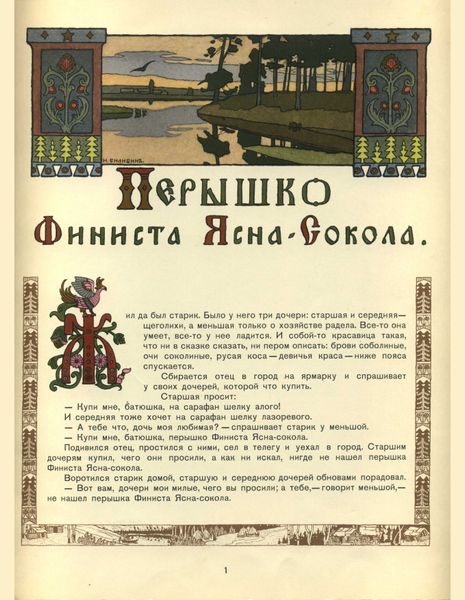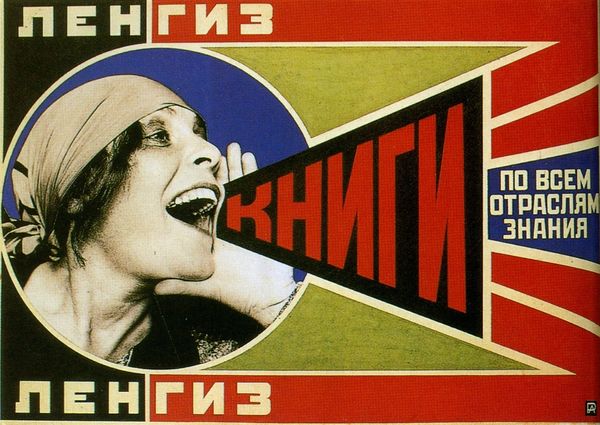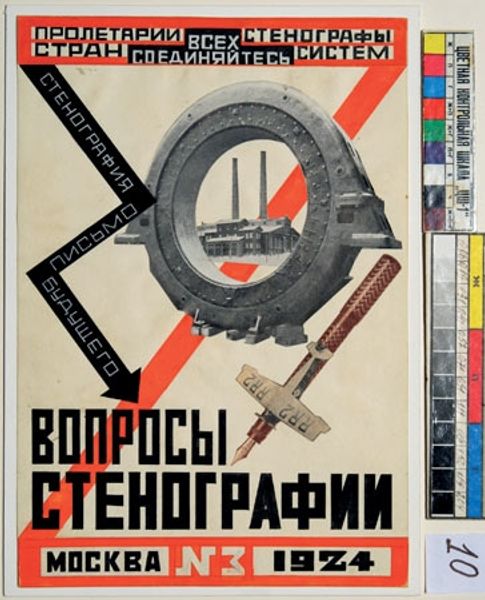
graphic-art, typography, poster
#
graphic-art
#
constructivism
#
promotional poster design
#
typography
#
event poster
#
russian-avant-garde
#
poster
Copyright: Public domain US
Curator: Let’s discuss Alexander Rodchenko’s "Promotional Poster for Mosselprom" from 1920. It is quite striking how this artwork merges graphic art and typography to promote state-produced bread. Editor: Yes, the bright, almost aggressively cheerful colors, combined with the stylized bread images, do seem quite unique for the time. What strikes you most about this piece? Curator: It's the artist's deep engagement with the socio-political environment through a Materialist lens. How does Rodchenko challenge our notions of artistic labor here? He presents typography and graphic design – traditionally seen as craft – as high art, celebrating mass production. It blurs the lines between artistic creation and the means of production. The poster directs the viewer toward a new understanding of how materiality and artistic production relate to consumption. What elements point towards this? Editor: Well, the direct language encourages consumption, highlighting cheap bread from "Mosselprom" accessible everywhere. The specific types of bread are named, which shows attention to different materials of making the loafs. How the images are rendered may reflect how food was considered essential or symbolic during the period it was made. Curator: Exactly. Rodchenko uses constructivist aesthetics to create a visually compelling advertisement, and through doing so it valorizes state production as an accessible, attractive service to its consumers, shaping taste and social behaviors. He utilizes material elements and innovative methods to elevate design in this new cultural and economic reality. The means and the modes, the image and the text are deployed to affect consumer behavior. What have you observed during this conversation? Editor: It is amazing to see how this poster's visual elements tie into its historical context, blending revolutionary aesthetics and socialist messaging. Curator: It is precisely how the raw materiality of the poster communicates wider societal ambitions, blurring established hierarchies between making and living, art and propaganda.
Comments
No comments
Be the first to comment and join the conversation on the ultimate creative platform.
